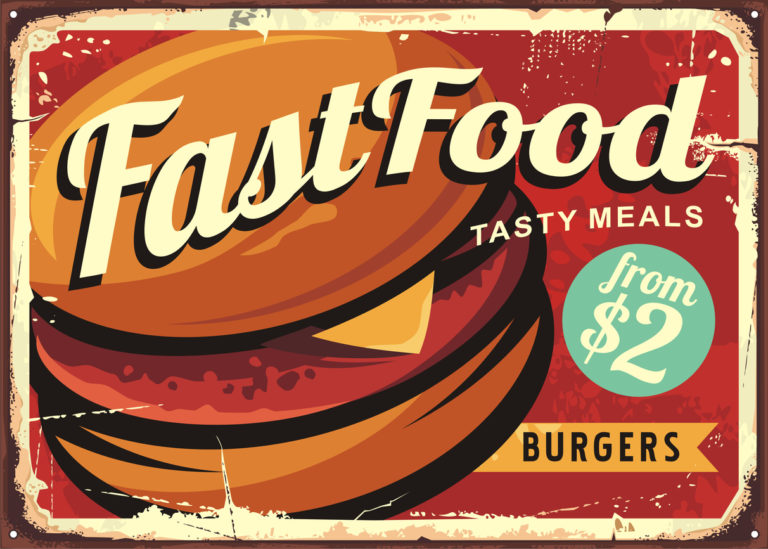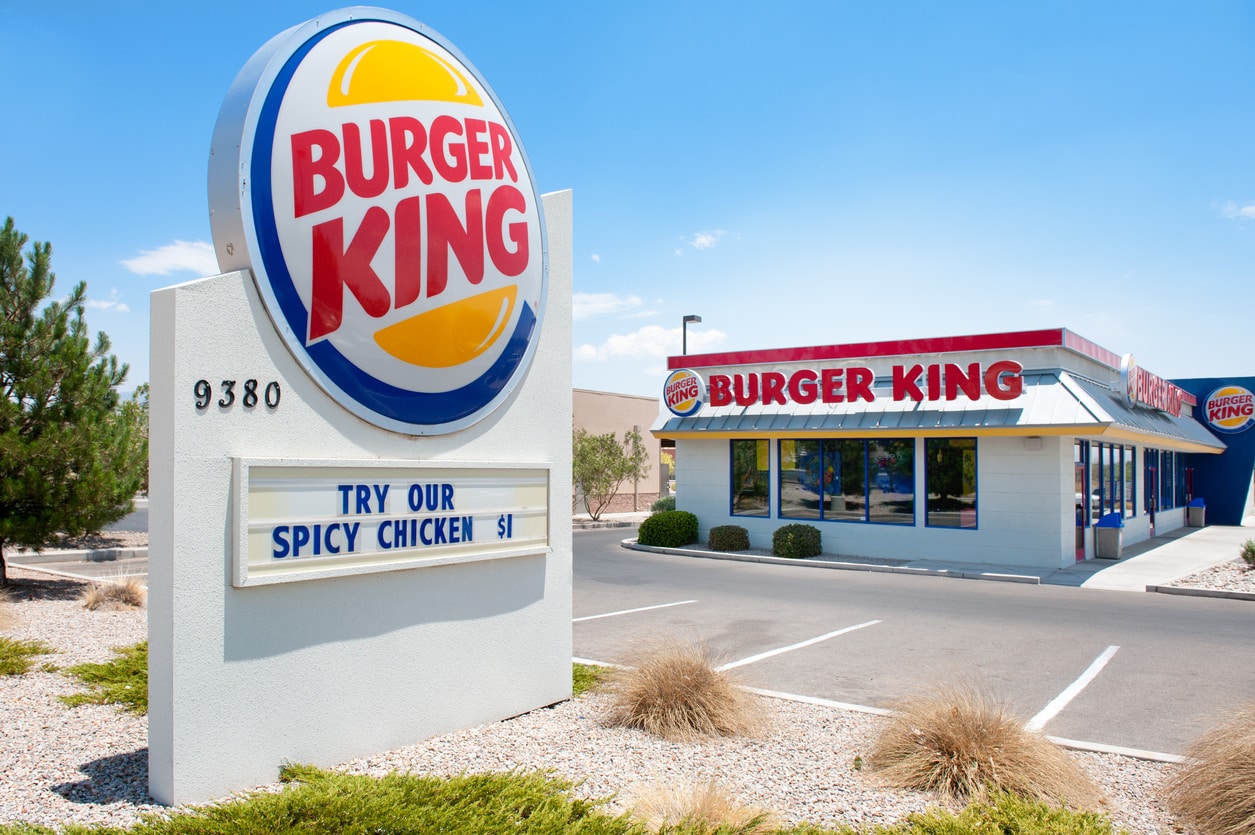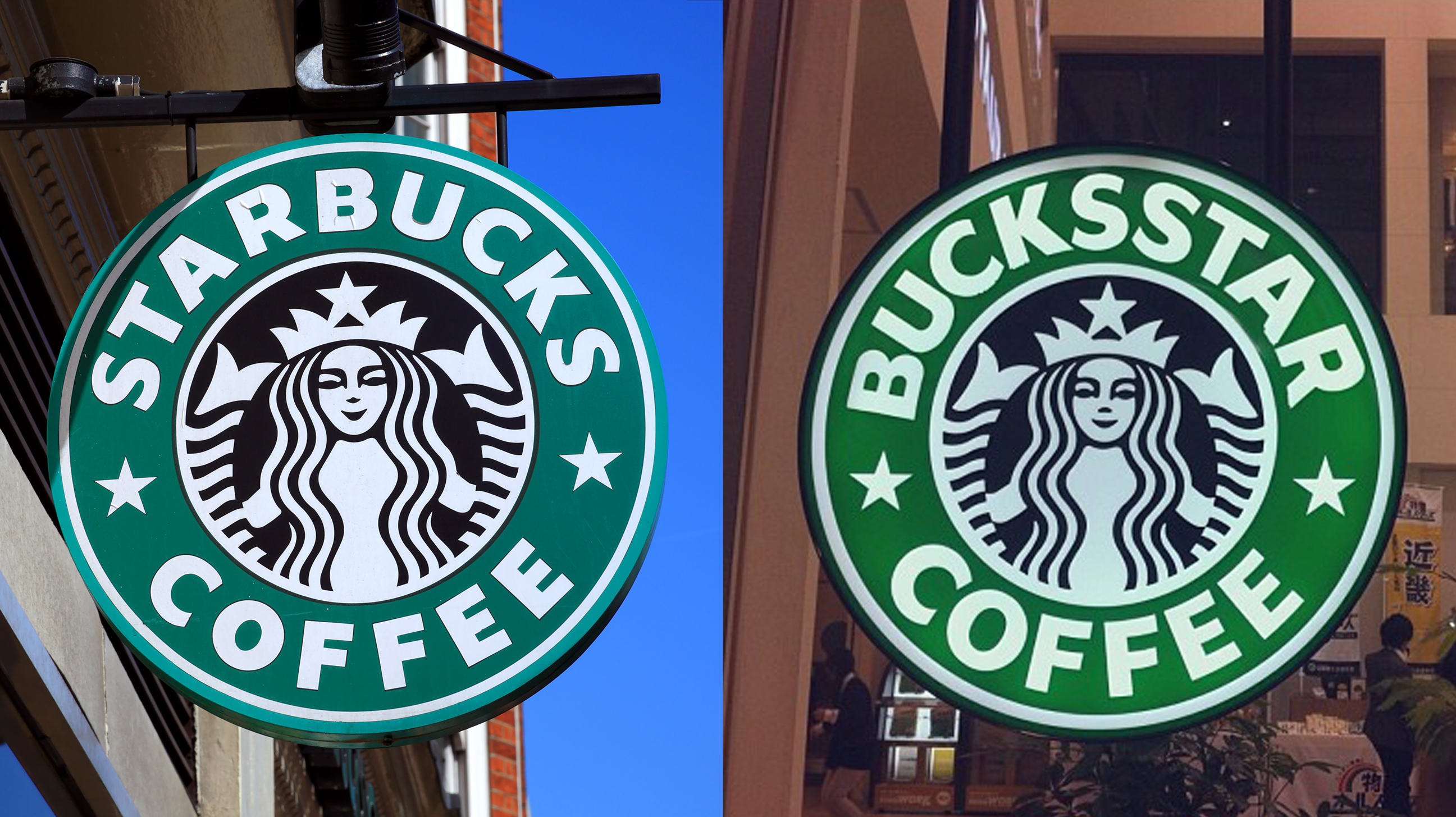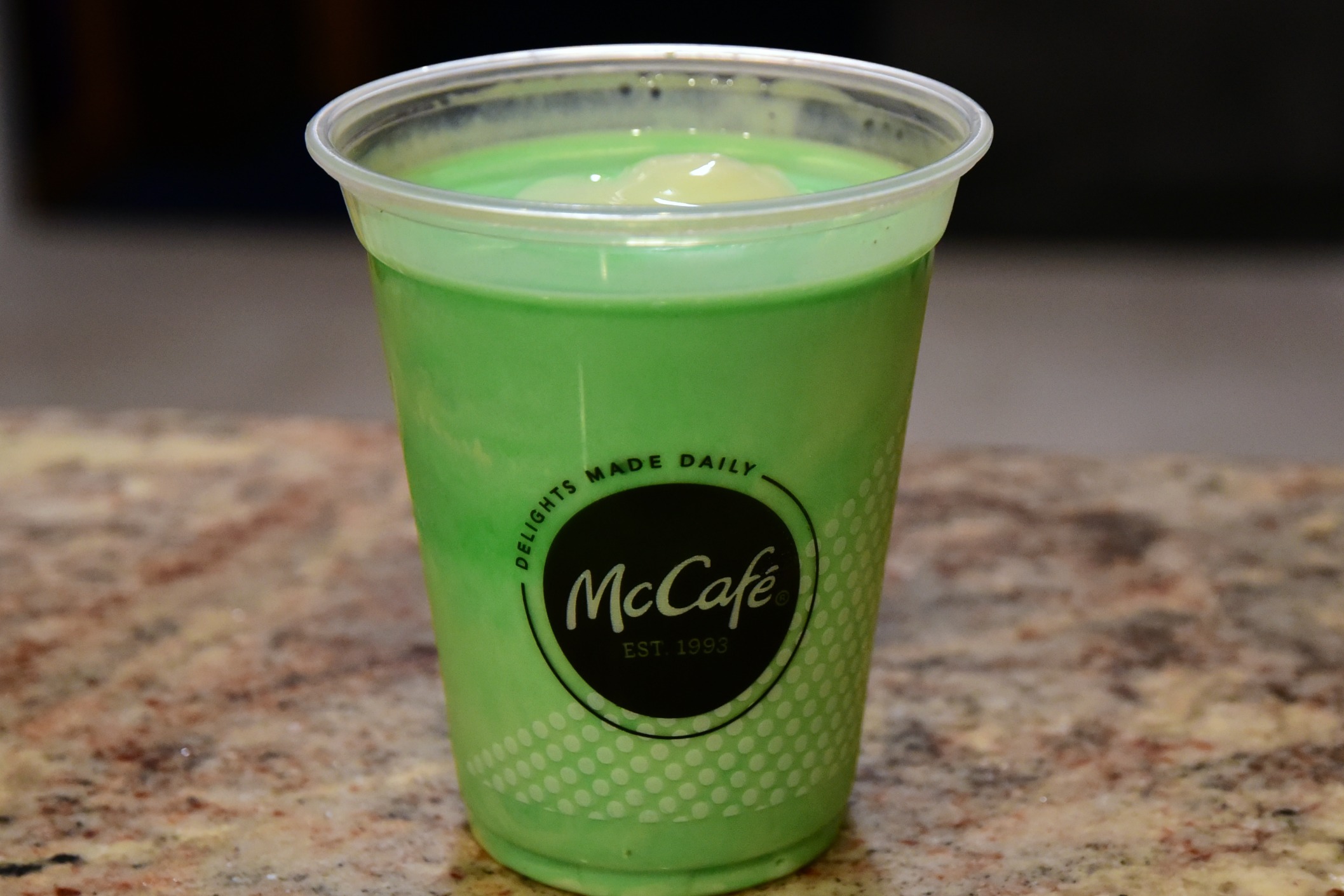When it comes to fast food, it’s best not to ask questions. You may just find out the weird way your hamburger was made, what it actually contains, and what toes were stepped on to make it. However, everyone wants all industries to be transparent now. Because of that, we’re here to share the history of some incredibly shady fast food restaurants.
We’re warning you; if you don’t want to ruin your favorite fast food place forever, you may want to shield your eyes.
Not all shady fast food restaurants serve questionable food, though. Many beloved fast food chains were founded on deceit. Some have been involved in multiple lawsuits. And other establishments have morally questionable CEOs. At the end of the day, fast food giants work like many other corporate businesses — a lot of shady wheeling and dealing takes place behind the scenes. A lot of these inconsistencies, however, are finally public knowledge. They deserve some scrutiny.
Transparency is key, people. Next time you order from a calorie-heavy food from your favorite fast food restaurant, you’ll have extra insight into the business.
1. Chick-fil-A is notoriously anti-LGBTQ.
Chick-fil-A CEO Dan Cathy walked his fast-food company into many controversial anti-LGTBQ-related disputes in the past.
In 2012, Cathy claimed the United States was “inviting God’s judgment on [the] nation when we shake our fist at him and say we know better than you as to what constitutes a marriage.” And when questioned about his seemingly queer-phobic stance, Cathy responded, “Well, guilty as charged.”
In 2017, Chick-fil-A donated about $1.8 million to anti-LGBTQ establishments — and that was after the chain tried to mend their relationship with the LGTBQ community. Many local governments banned the chain from setting up shop in their towns and cities. But Chick-fil-A still reigns as one of the premier fast food stops in America.
2. Taco Bell was founded on a stolen recipe.
Glen Bell opened his first-ever Taco Bell location in Downey, CA, in 1962 and was immediately met with success.
Just three years later, he sold his company to PepsiCo, Inc. for a whopping $125 million. But Bell wasn’t exactly a self-made millionaire. He actually “befriended” the owners of Mitla Cafe in San Bernardino, CA, where he had been a regular for years. Then he stole the now-famous hard-shell taco recipe from Mitla’s owners, Lucia and Salvador Rodriguez.
Luckily, the public’s love for Mitla Cafe never wavered. It’s still a super popular Mexican restaurant in San Bernardino, and the Rodriguez family reportedly has no hard feelings toward Bell or his success.
3. KFC’s Colonel Sanders was not the man we think he was.
Colonel Sanders was absolutely a real man who dealt with a lot of real issues.
Although it’s not true that he considered taking his life after retiring at age 65 (before starting KFC), Sanders did experience hardships before selling tasty fried chicken. For starters, Sanders dealt with a lot of family turmoil. He lost his father at five years old, and he was married with a child by age 19. The Colonel’s wife left him at one point, and he won her back only to cheat on her with several different women.
After establishing, growing, and selling KFC for only $2 million in 1964, the Colonel (who wasn’t actually a military colonel at all) tried to sue KFC for $122 million in 1971 because the chain didn’t allow him to sell the Original Recipe chicken at another restaurant. The suit settled for a mere $1 million. So Sanders eventually claimed KFC didn’t actually use the Original Recipe he created with *the* blend of 11 herbs and spices.
Sanders also told the New Yorker in 1970 that the chain’s gravy recipe “ain’t fit for my dogs.” Oof.
4. Subway chicken sandwiches were only half chicken.
In 2017, Canada’s CBC Marketplace DNA-tested two Subway chicken sandwiches to see if the chain was serving up the real deal.
Unfortunately, it wasn’t. In both DNA tests, the researchers found the meat only contained about 50% chicken DNA. Soy made up the rest of the product.
Subway responded to the test, stating:
Our recipe calls for one percent or less of soy protein in our chicken products. We will look into this again with our supplier to ensure that the chicken is meeting the high standard we set for all of our menu items and ingredients.
5. Waffle House was a hotspot for murders.
In April 2018, a mass shooting took place in a Nashville Waffle House, and the tragedy flooded headlines for several weeks.
However, this was not the only tragedy that took place at a Waffle House — it was one of several. A 2015 murder occurred at a Waffle House in New Albany, IN. A man was shot and killed at a Waffle House in 2019 in Gainesville, FL. And in October 2018, a woman testified against a man who attempted to kill her while she worked as a waitress at a South Florida Waffle House in 2002. The list doesn’t end.
Murders and crimes may consistently happen at Waffle House chains because many of the restaurants stay open for 24 hours and are located in high-crime areas. It’s also possible that Waffle House is cursed. Who really knows?
6. McDonald’s allegedly used pink slime.
In a 2010 episode of Jamie Oliver’s Food Revolution, the celebrity chef called out McDonald’s for having “pink slime” in their patties.
The pink goo is actually made from boneless lean beef trimmings — the meat left after butchers take the choice beef cuts from the bone. The United Kingdom actually bans humans from consuming these trimmings. But the U.S. allows them in McDonald’s patties if they’re treated with ammonium hydroxide to kill potential E. coli.
After Jamie Oliver’s show, however, the public seriously questioned McDonald’s practices. Consequently, the chain stopped using boneless beef trimmings and said:
At the beginning of 2011, we made a decision to discontinue the use of ammonia-treated beef in our hamburgers… This product has been out of our supply chain since August of last year. This decision was a result of our efforts to align our global standards for how we source beef around the world.
7. Wendy’s ripped off Kewpee Hamburgers.
While growing up in Kalamazoo, MI, Wendy’s founder Dave Thomas fell in love with the square-patty burgers at Kewpee’s Hamburgers.
The restaurant was not so subtly named after the strange Kewpie Dolls that were popular in the 1950s. But after starting his own burger joint in 1969, Thomas hijacked Kewpee’s burger style and called it “old fashioned.” At least he’s paying homage to the place that inspired him in some way.
8. Jack in the Box was the source of the biggest E. coli outbreak in U.S. history.
In 1993, an investigation into the influx of hemolytic uremic syndrome cases in Washington revealed some interesting things.
Apparently, 73 Jack in the Box locations served hamburger meat tainted with E. coli. Ultimately, over 700 people throughout Washington, Idaho, California, and Nevada got sick, 171 were hospitalized, and four people died. The investigation also revealed that several health departments told the company that employees were undercooking meat.
However, Jack in the Box’s parent company decided that cooking burgers at the appropriate 155 degrees made the meat too tough. They knowingly continued to put people at risk.
9. McDonald’s released a “McAfrika” during a South African famine.
McDonald’s always has some amazing international creations like the Grand McExtreme Bacon Burger from Spain and the Stroopwafel McFlurry from the Netherlands.
Both creations are headed to America, by the way. In 2002, though, McDonald’s Norway released the McAfrika, a beef, cheese, and vegetable sandwich served in a pita. However, many people found it tasteless. Norway, one of the richest countries in the world, released the sandwich during one of the worst famines South Africa ever faced. Accordingly, the company pulled the plug on the creation and set up donation boxes to provide aid to South Africa instead.
In 2008, McDonald’s tried to make another McAfrika (served with “exotic African sauce” this time) in honor of the 2008 Beijing Olympics. And, yeah, people still hated it.
10. Taco Bell used mystery meat.
In 2011, testing revealed only 88% of Taco Bell’s “beef” came from cows.
The remaining meat was unaccounted for. Further testing showed that the other ingredients were soy lecithin, maltodextrin, lactic acid, and caramel color. The fast-food chain tried to be transparent about the mystery meat in 2014, posting an explanation that claimed everything in the meat was FDA approved.
It should be noted, however, that the page no longer exists. Furthermore, Taco Bell reportedly suggested that every restaurant used those ingredients. We, however, are not totally convinced.
11. Arby’s served up human fingers — more than once.
Arby’s may “have the beef,” but they also have the appendages.
In 2012, a Michigan teen found an entire chunk of finger in his Arby’s sandwich. And in 2004, a man in Ohio found an employee’s slab of skin tucked between the buns of his food. The Arby’s worker sliced his finger while shredding lettuce and didn’t think it necessary to throw the batch of lettuce away.
The customer sued the chain for $50,000.
12. Subway’s foot-long sandwiches were not actually a foot long.
In 2013, an Australian teen measured one of Subway’s 12-inch subs to see if he really got what he paid for.
Long story short — he didn’t. In fact, the sandwich was an entire inch too short. After the teen took to the internet to share his findings, people went mad. Subway soon faced two class-action lawsuits and eventually changed their practices. The company stated:
We have redoubled our efforts to ensure consistency and correct length in every sandwich we serve. Our commitment remains steadfast to ensure that every Subway Footlong sandwich is 12 inches at each location worldwide.
13. McDonald’s handed out heroin in Happy Meals.
A Pittsburg-based McDonald’s employee faced some serious charges in 2014.
Apparently, Shantia Dennis would wait for specific customers to say, “I’d like to order a toy,” and then she’d give them drugs disguised in a Happy Meal bag. To catch her, two undercover officers called Dennis before hitting up the McDonald’s where she worked, as was customary for her buyers.
Then they went through the drive-thru, asked for a “toy,” and paid $82 for 10 small bags of heroin. Dennis was arrested and charged with criminal use of a cellphone, delivery of heroin, possession with intent to deliver heroin, and possession of heroin and marijuana.
14. Wendy’s stopped advertising during Ellen after the actress came out.
When Ellen DeGeneres came out during her ’90s sitcom, several companies boycotted her.
Wendy’s was one such organization; they stopped airing their commercials during her series altogether. People speculated that DeGeneres would share her news during “The Puppy Episode,” so some companies pulled their ads before the show even aired.
The LGBTQ community reportedly retaliated with a boycott.
15. Chipotle got a lot of people sick.
For a while there in 2015, we thought Chipotle was finished.
The chain infected 243 people in Simi Valley and 143 in Boston with the norovirus. People in California, Minnesota, and Wisconsin got salmonella. And 60 people across 11 states contracted E. coli from Chipotle’s food.
The chain admitted that the norovirus outbreaks were caused by sick employees coming into work. But, no one ever discovered the cause of the salmonella and E. coli outbreaks. Chipotle might not be totally in the clear, but the public still loves going there for the guac.
16. Carl’s Jr. got risqué with their commercials.
[fm_youtube url="https://www.youtube.com/watch?v=gAwg6GE3AdA"]In 2005, the chain promoted a very suggestive ad starring Paris Hilton.
Many parents refused to even watch Hilton lather up the Bentley in the commercial. In fact, the Parents Television Council publicly denounced it. However, Carl’s Jr. CEO, Andy Puzder, refused to take the ad down. He actually aired more steamy promotions featuring other models in skimpy clothing throughout the 2000s and 2010s.
17. Pizza Hut did *not* invent the stuffed-crust pizza.
When Pizza Hut debuted their Stuffed Crust Pizza in 1995, they changed pizza forever.
The idea was genius; Pizza Hut added melty cheese inside the crust. However, the idea wasn’t completely original. New Yorker Anthony Mongiello claimed he invented the Stuffed Crust Pizza, and the proof was in his 1987 patent. Mongiello and his family sued Pizza Hut for $1 million in 1999, but lost the suit.
According to Business Insider, the judge in the case stated:
[Mongiello’s] method patent is not infringed simply because some examples of defendant’s completed product approximate plaintiff’s product.








